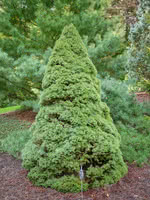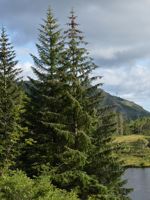Mon-Fri 9am - 5pm Mountain time
Dwarf Alberta Spruce vs Sitka Spruce
Picea glauca conica
Picea sitchensis
CUSTOM GROW
Dwarf Alberta Spruce is a small tree with very dense foliage. It is an attractive specimen in landscape designs and small yards. This plant naturally grows into the classic conical shape, but responds well to shearing and pruning.
Dwarf Alberta Spruce is hardy and disease resistant. However, its thick foliage can collect mildew. Consider planting this tree in an open space where the wind can dry out its needles.
You can use this cultivar as a substitute for cedar or juniper.
Sitka Spruce is a native conifer and the largest spruce species in the world. It grows quickly and reaches impressive heights, often reaching more than 50 metres (164 feet) in suitable conditions. It has strong, durable wood that has long been recognised for its commercial value.
It contributes to soil stability and plays an important role in coastal ecosystems. It offers cover and nesting sites for birds and small animals, and its seeds provide food for wildlife such as songbirds and small mammals.
Sitka Spruce plays a role in reforestation and ecological restoration projects in Coastal BC. It also holds historical significance: the Wright Brothers famously used Sitka Spruce to construct the frames of their first flying machines.

